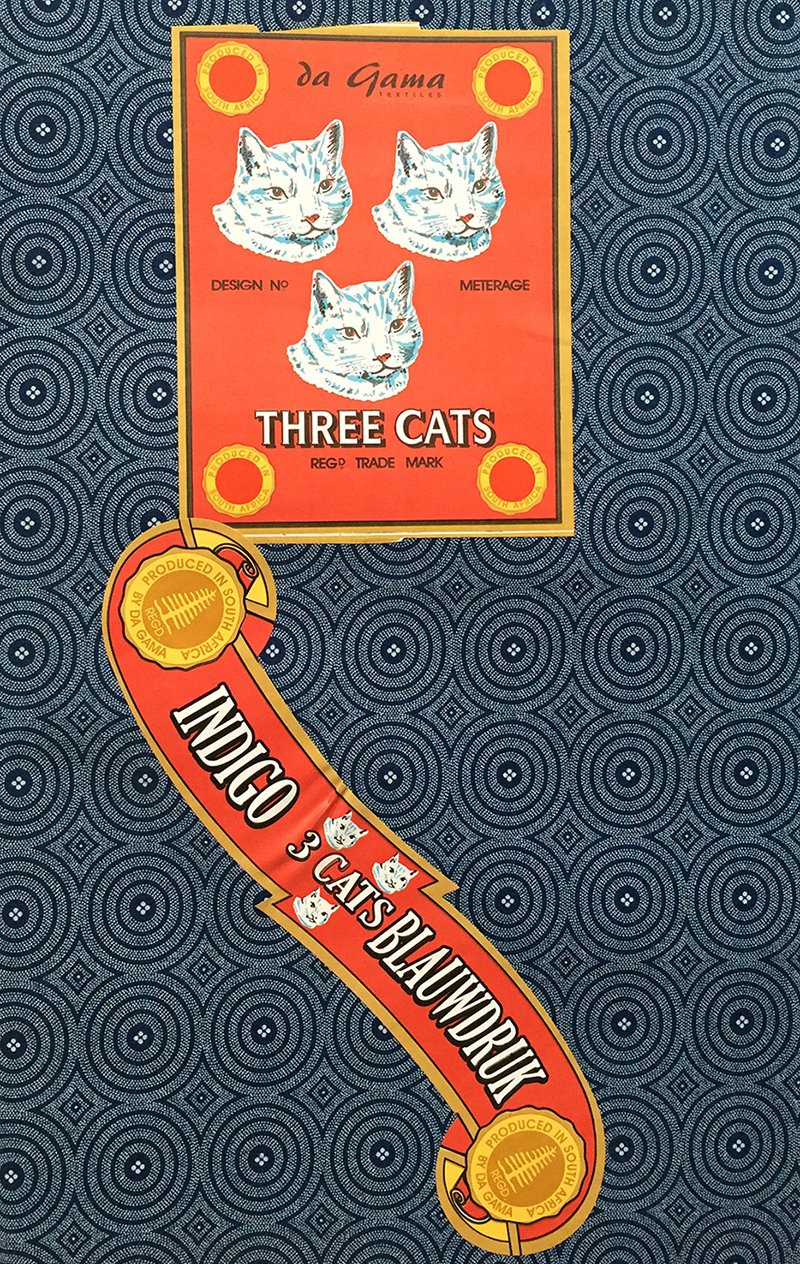Accession card
Description
While browsing through the items at the shop at the textile research center, a pile of indigo-dyed silk pocket squares caught my eye. The print was familiar, resembling what I have seen often in textile shops and worn by the women in South Africa, a fabric best known as Shweshwe.
Here in the textile research center, the fabric is labelled as ‘Blaudruk’, translated as ‘blueprint’ as it resembles architectural drawings with white lines on blue paper. The blueprint technique was established in Central Europe in the 17th Century, adapting the knowledge of resist dyeing and the 6000-year history of Indigo extraction and vat-dying from India and surrounding areas.
With the establishment of the Dutch Cape Colony in 1652, East Asian trade goods were increasingly routed through Southern Africa before reaching Europe. Shweshwe was originally brought to South Africa in the mid 1800s by German immigrants. The German settlers would wear the blaudruk fabric. Xhosa women attending German missionaries adopted this print and it gradually spread throughout the Xhosa people. Another narration describes how indigo cloth was presented to the then ruler, King Moshoeshoe by French missionaries in 1840. The King endorsed the fabric and it spread in popularity throughout the Sotho and Zulu inhabitants in the area. The cloth was named after the king, referred to locally as shoeshoe and eventually shweshwe. Other tales suggest that it is the onomatopoeic word for the swishing sound – Shwe shwe shwe - that the skirts make when women walk. Shweshwe has now been absorbed into traditional uses and practices in (Southern) African cultures. Its popularity reflects its symbolic qualities and special significance within (Southern) African culture with strong historical links and imaginings associated with identities, contemporary aspirations, imagery, and rituals.
Development of synthetic indigo in Germany in the late 1800s skyrocketed European shweshwe production. By the 1940s, South Africa imported most of its shweshwe from England, including the famous brand: ‘Three Cats Shweshwe.’ In the 1980s, things shifted as Shweshwe was manufactured locally by De Gama Textiles. With the benefits of local production, the industry flourished and the popularity of the fabric increased. New colours, such as chocolate brown and burgundy, were also introduced. New patterns were created to respond to the flora and fauna of the local context
It was interesting contextualizing what I knew about the history of Shweshwe when visiting the Vlisco factory and through our conversations at the workshop around ‘African Identity’ and authenticity. In the simplest sense we can see that Africa as a continent cannot be collectively grouped under one category of textile style. In this case Shweshwe has little resemblance to the ‘wax prints’ that we had seen at Vlisco and what is culturally used in Central and Western Africa. Here, the colours and patterns are more subdued.
Being an South African Indian doing research on migrant and diasporic spaces and the use of textiles in place-making, I am also interested in the racial or ethnic readings of the distribution of fabrics, especially Shweshwe, within South Africa. In my work I have found that more than 90% of wholesalers of Shweshwe are South African Indian, maintaining control over the market due to strong historical links to international and local manufacturers, owning licenses for selling these fabrics. The cultural exchange and co-productions of these fabrics reflect the multiplicity of local and immigrant identities, and are shaped by the long histories of regional to global networks of power and trade documenting the stories of African, Indian Ocean Trade and European exchange. The relationship between internationally produced merchandise, sold in Africa by South Asian traders for African cultural functions challenges categories of Western and non-Western and modern and traditional.
Code
Date
University
Title
Medium
- Image



